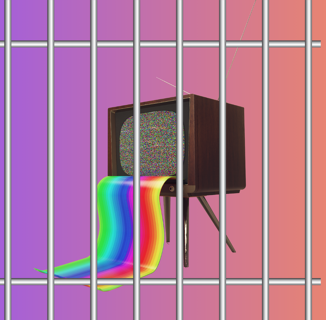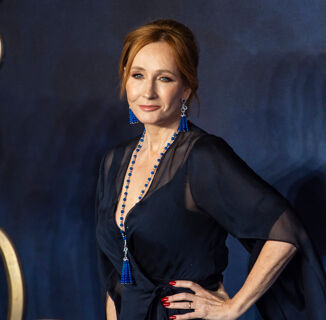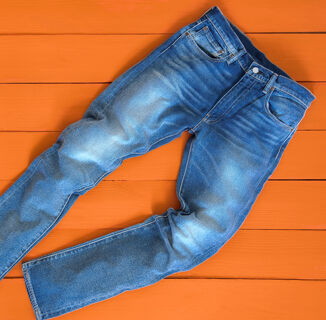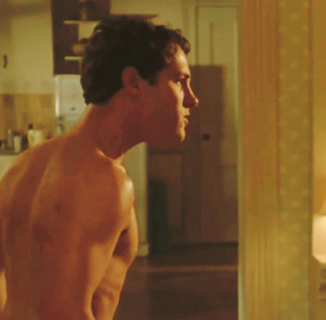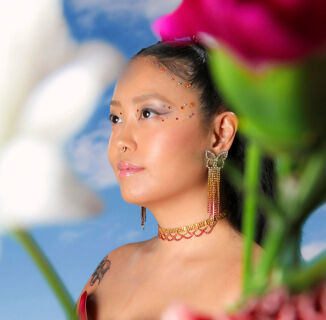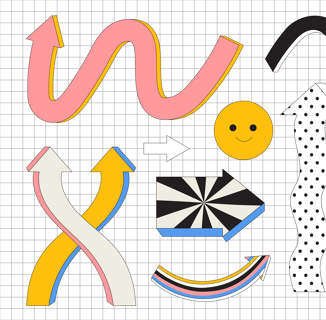Coming out as bisexual is a strange experience. You’re telling people something they already know: that you have a sexual interest in the opposite gender, and you’re mixing it with something they don’t know: that you also dig the same gender. It’s like mixing a super strong cocktail that some will slug back and others will spit out. Generally speaking, coming out as bisexual can communicate two very different and conflicting message to heterosexual and homosexual communities. As they say, the bisexual closet has two doors.
While most peers are (hopefully) supportive, straight people tend to think you’re experimenting, attesting your sexuality is temporary when it’s not. In the LGBT community, they tend to believe you’re only halfway out of the closet. You’re not entirely homosexual, so bisexuality is merely a pit-stop before admitting you’re gay (“bi now, gay later”). This double stigma can be incredibly frustrating and perhaps why the majority of bisexual individuals remain closeted, especially men.
It’s discouraging because we can’t seem to collectively understand a sexual orientation that one-third of today’s youth identifies with. A survey commissioned by the BBC last year found that percentages of people identifying as bisexual steadily increased the younger the respondents were. In Gen Z, 24 percent reported being mostly attracted to the opposite sex or equally attracted to both sexes compared to 18 percent of Gen-Yers and eight percent of Gen-Xers.
The majority still thinks in binary terms, especially with regard to sexuality and orientation. Bisexuality doesn’t sit well with that. “I think the fact that there are varying ‘shades’ of bisexuality also throws people off a bit and this vaugery makes people uncomfortable,” Lawrence Siegel, clinical sexologist, tells Into. “For many, there is a distinct preference for one sex, but they enjoy occasional sexual and intimate contact with another (but they don’t all identify as bisexual),” he shares. “Others are equally attracted to men and women. For many, this is still seen as a binary and those who are attracted to any type of sexual or gender expression are more likely to refer to themselves as ‘pansexual’ these days.”
Bisexual people comprise the largest segment of the LGBT community, and these numbers are increasing. Research from the Center for Disease Control found percentages of bisexual men and women had increased a considerable amount. As most of these studies conclude, more women report having sexual contact with both genders than men. This is partially due to the fact that bisexual women tend to be more accepted than men. Women liking women can be considered “hot” (though that’s definitely not what bisexual women are after). Bisexual men, on the other hand? They’re just gay and not willing to admit it. However, the number of men to identify as bisexual nearly doubled in five years. Among those who labeled themselves heterosexual, 13 percent of women and three percent of men had engaged in sexual contact with the same sex. “Mostly straight,” perhaps?
Still, the stigma persists and has affected the collective comfort levels of bisexual people. Only 28 percent of bisexuals said most or all of the important people in their lives knew about their sexual orientation, compared to 71 percent of lesbians and 77 percent of gay men. Again, the numbers were especially small among bisexual men, where only 12 percent said they were out to that degree, compared to one-third of bisexual women.
Workplace stigma is no different. Only 11 percent of bisexual people polled by Pew said most of their closest co-workers know about their sexual orientation, compared to 48 percent of gay men and 50 percent of lesbians. Bisexuals were also less likely to say their workplaces were accepting of them, and a separate study published in the Journal of Bisexuality found half of bisexual people surveyed said their coworkers misunderstood bisexuality.
The bisexual orientation is commonly misunderstood in a few ways (in addition to those already outlined). One is that we’re seen as promiscuous and cannot be trusted. “There’s a biphobic undercurrent of perceived disloyalty when it comes to bisexuality,” Page Turner, relationship coach, author and proud bisexual woman, tells INTO. As a relationship coach specializing in consensually non-monogamous relationships, Turner believes biphobia has greatly contributed to the stigma against people who are polyamorous or in open relationships. “While there are plenty of bisexual people who are also quite monogamous, I found many people think being bisexual means that you have to have at least one partner of each gender you’re attracted to at the same time,” she says. “And that if you’re bisexual you can’t really be happily monogamous with a single partner. That’s simply not the case.”
Bisexual women are viewed as either showgirls for straight men or sexual tourists for women. Bisexual men must convince men and women that they aren’t gay. Together, bisexuals are seen as more privileged in the LGBT community as we’re able to “duck” discrimination by entering straight relationships.
People like to put others in boxes: you’re gay or you’re straight; male or female. The reality is, gender and sexuality exist on a spectrum, this was established years ago. “I have bisexual friends who mostly date men and others who mostly date women,” Andrea Gonzalez, a bisexual woman, tells Into. “That doesn’t make them any less bisexual, just like being married to a woman or man doesn’t automatically change your sexuality. Now that I’m married to a woman, people assume my sexuality has been defined by that and I am no longer bisexual. It’s like the second you put a ring on it, you have to pick a side. That’s foolish.”
In fact, Gonzalez never officially came out as bisexual. “I never saw that as a real option,” she says. “I was made to feel like if I was going to come out, it had to be as gay, not anything in-between. I had always dated men. Then, at 18, I dated a woman so I thought, ‘OK, I’m a lesbian, I’ll come out as that.’” Later, Gonzalez went back to dating men and thought maybe people were right and that was just a phase. At 21, she started dating both men and women and became more open about her sexuality. That’s when she realized that she didn’t have to choose a side.
“I think a lot of people are underwhelmed by someone coming out as bisexual simply because they don’t see a real need to do so,” Siegel says. “They don’t see it the same way as coming out as gay, usually because they relate to the struggle of having a ‘different’ orientation. There’s not a struggle they can see in being bisexual, especially if they don’t consider it a legitimate orientation.”
However, the very fact that there are more people identifying as bisexual speaks to the fact that bisexuality is being recognized; we’re at least acknowledging the subtleties of sexuality. Understanding it on the other hand? Not even close. And that’s an issue. “I do think bisexual people will be taken more seriously in the future,” Turner says. “The trends that I’ve observed over my lifetime have been extremely encouraging and I only see those continuing. I think it’ll be important for people to continue coming out and sharing their stories. If there’s anything I’ve learned, it’s that the best defense against biphobia and bi erasure is existing and staying visible.”
Siegel agrees. “Where I see it not be taken more seriously is in the growing rejection of the binary view of both sex and gender,” he says. “As sexual and erotic orientations are opening up and expanding for people, there is less of an inclination for them to identify themselves according to traditional lines of male-female or gay-straight; or even bisexual.”
If you aren’t able to come out for whatever reason, Turner says it’s important to have conversations with people you trust. “People close to you don’t always understand right away,” she says. “It can take some time. In my own life, I’ve found that people close to me need time to really adjust and internalize new information. It might take longer than you like, but it does happen.”
This article includes links that may result in a small affiliate share for purchased products, which helps support independent LGBTQ+ media.
Help make sure LGBTQ+ stories are being told...
We can't rely on mainstream media to tell our stories. That's why we don't lock our articles behind a paywall. Will you support our mission with a contribution today?
Cancel anytime · Proudly LGBTQ+ owned and operated
Read More in Culture
The Latest on INTO
Subscribe to get a twice-weekly dose of queer news, updates, and insights from the INTO team.
in Your Inbox



